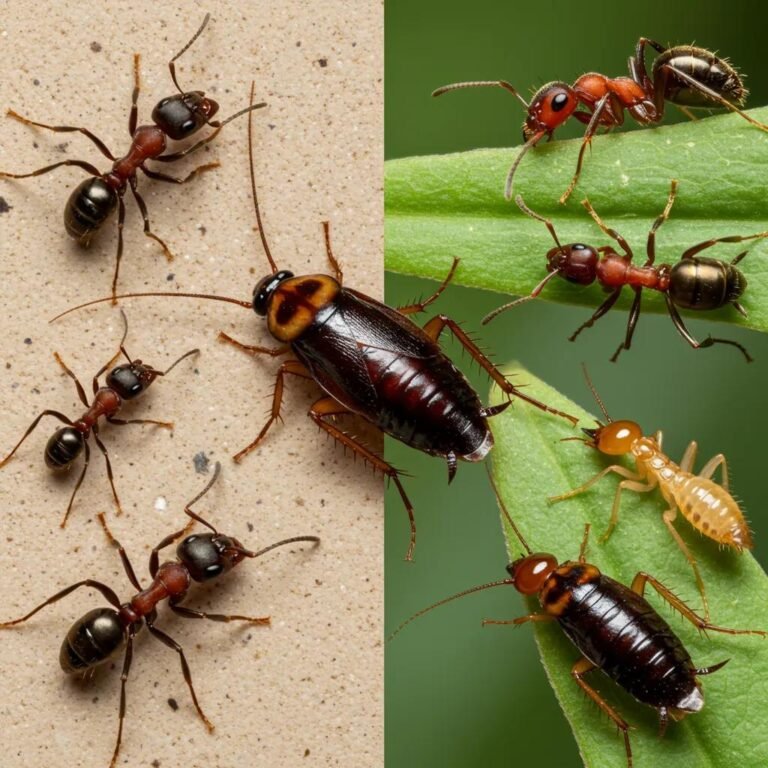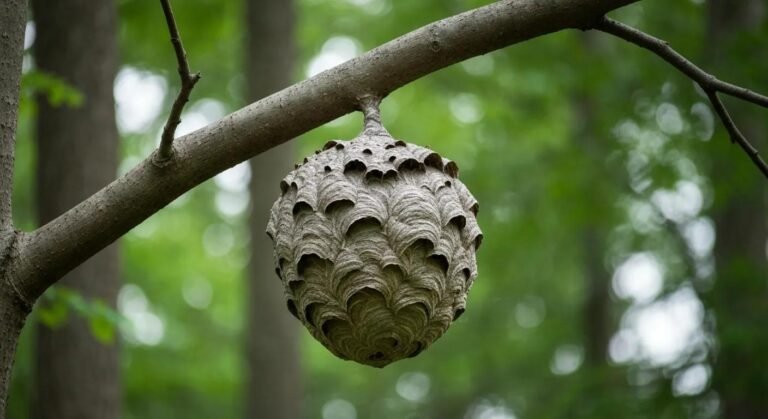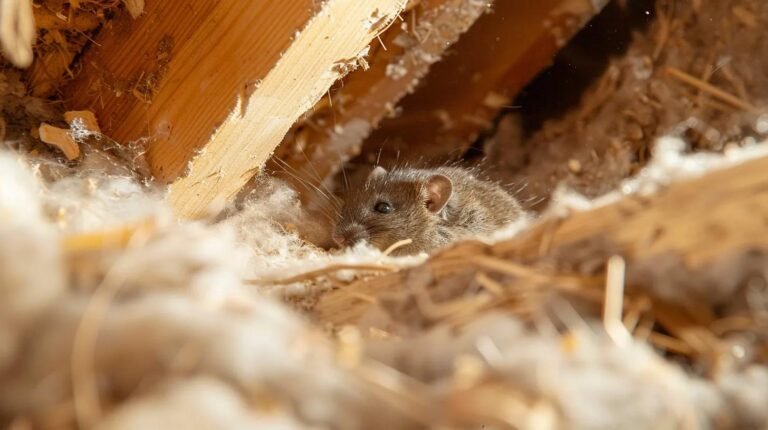Fall represents the optimal time for addressing one of the most overlooked aspects of home pest prevention: compromised attic insulation. While homeowners typically think of insulation in terms of energy efficiency and climate control, the reality is that old, damaged, or contaminated insulation can become a major attractant and harborage area for a wide variety of pests. Understanding the relationship between insulation condition and pest activity allows property owners to address multiple home maintenance concerns simultaneously while protecting their investment and family health.
The timing of fall insulation assessment and replacement provides strategic advantages that extend well beyond immediate pest concerns. As temperatures begin to moderate and before the onset of peak heating season, fall offers ideal working conditions for comprehensive insulation removal and replacement projects. Additionally, addressing insulation issues during fall prevents pest establishment in compromised materials during the critical months when many species seek overwintering sites in protected environments.
Modern pest control recognizes that effective long-term management requires addressing the environmental conditions that attract and support pest populations rather than simply treating visible infestations after they develop. Compromised insulation represents one of the most significant but under addressed factors in residential pest problems, creating conditions that can support multiple pest species simultaneously while undermining other pest control efforts.
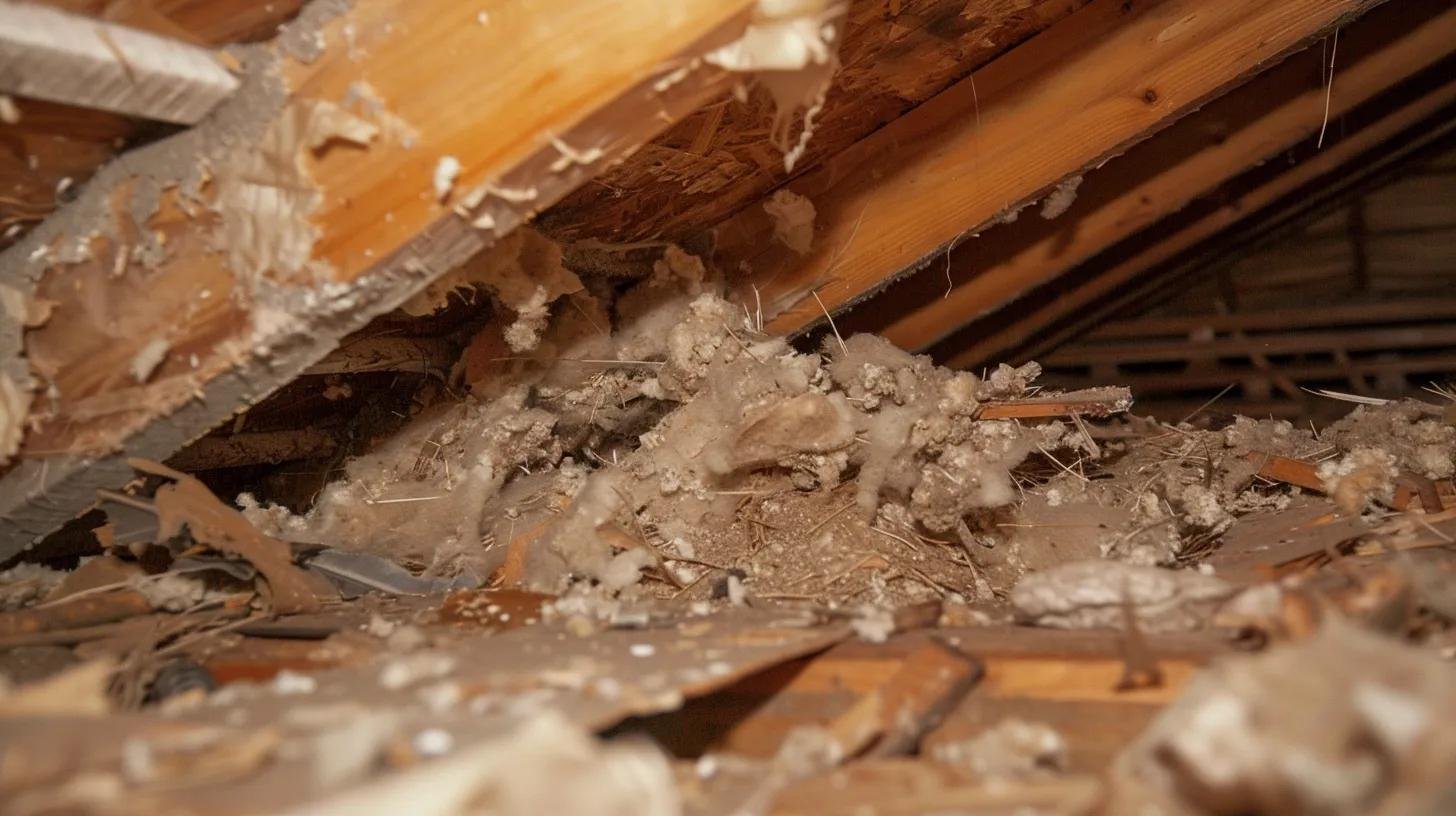
Understanding How Insulation Attracts Pests
The relationship between insulation materials and pest activity involves complex interactions between material properties, environmental conditions, and pest biology that many homeowners don’t fully appreciate. Different insulation types present varying levels of pest attraction and support, while the age and condition of installed insulation significantly impacts its role in pest management.
Material Composition and Pest Preferences
Cellulose insulation, composed primarily of recycled paper products, provides both food and nesting material for many pest species. While treated with fire retardants and pest deterrents during manufacturing, these chemical treatments degrade over time, gradually reducing their effectiveness and making older cellulose insulation increasingly attractive to pests.
Rodents find cellulose insulation particularly appealing because it provides easily manipulated nesting material that can be formed into secure nesting chambers. The organic composition of cellulose also supports various insect species that feed on paper-based materials, creating secondary food sources that attract predatory pests like spiders and centipedes.
Fiberglass insulation, while less nutritionally attractive to pests than cellulose, can still provide excellent harborage areas when it becomes displaced or contaminated. The loose structure of traditional fiberglass batts creates void spaces that rodents can easily tunnel through, while the material’s texture provides grip points for climbing insects and arachnids.
Foam insulation types present different pest challenges depending on their specific composition and installation method. Closed-cell foam provides fewer pest opportunities than open-cell varieties, but both can be compromised by rodent gnawing activity that creates entry points and nesting cavities within insulation systems.
Moisture and Pest Attraction
Insulation’s pest attraction potential increases dramatically when moisture problems develop. Wet or damp insulation provides drinking water for various pest species while creating ideal conditions for mold and fungal growth that attracts moisture-seeking insects and provides food sources for various pest species.
Moisture-compromised insulation loses much of its thermal effectiveness, creating temperature variations within attic spaces that many pest species find attractive. These temperature gradients allow pests to select optimal microenvironments within larger spaces, increasing the likelihood of successful establishment and reproduction.
The combination of moisture, organic matter, and temperature variation in compromised insulation creates what pest control professionals call “pest magnets” – environments so attractive to multiple pest species that conventional control measures become significantly less effective until underlying conditions are addressed.
Age-Related Deterioration
As insulation ages, its pest-resistance properties deteriorate in predictable ways that increase pest attraction and support capabilities. Chemical treatments that provide pest deterrence lose effectiveness over time, while physical deterioration creates more accessible harborage areas and easier manipulation by pest species.
Settled insulation loses its structural integrity, creating pathways and void spaces that facilitate pest movement and nesting activities. This settling also reduces thermal effectiveness, creating the temperature variations that many pest species exploit for optimal survival and reproduction.
Old insulation often accumulates debris over time, including dust, organic matter, and dead insects, which provide food sources for various pest species while creating more complex habitat structures that support diverse pest communities.
Common Pests Found in Insulation
Understanding which pest species commonly exploit insulation systems helps homeowners recognize infestations early and implement appropriate control measures. Different pest types create varying levels of damage and health risks, making species identification crucial for effective management strategies.
Rodent Infestations
Roof rats represent the most significant rodent threat to attic insulation in South Florida, with their excellent climbing abilities allowing easy access to elevated insulation areas. These agile rodents create extensive tunnel systems through insulation materials, displacing and contaminating large areas while establishing multiple nesting sites throughout affected spaces.
Rat control and extermination efforts become significantly more challenging when rodents establish populations within insulation systems. The loose material provides excellent concealment while the tunnel networks created by rodent activity offer numerous escape routes that make trapping and baiting less effective.
Rodent contamination of insulation extends beyond simple displacement to include urine saturation, fecal contamination, and the accumulation of parasites and pathogens that create serious health concerns. A single roof rat can produce 25,000 droppings annually, while urine contamination can affect much larger areas than visible damage suggests.
House mice, while smaller than rats, can create equally problematic infestations within insulation systems. Their smaller size allows access to areas that rats cannot reach, while their higher reproductive rate means that small infestations can expand rapidly if not addressed promptly and completely.
Insect Invasions
Termite activity within insulation systems poses particularly serious concerns because infestations can remain hidden for extended periods while causing significant structural damage. Subterranean termites can build mud tubes through insulation materials to reach wooden structural elements, while the insulation provides concealment that delays detection until damage becomes extensive.
Termite control measures may be compromised by contaminated insulation that interferes with detection and treatment efforts. Professional termite inspections require clear access to structural elements and soil contact areas that may be obscured by displaced or excessive insulation materials.
Carpenter ants also exploit insulation systems, particularly in areas where moisture problems have compromised wood structural elements. These insects excavate galleries in wood while using insulation materials for nesting and brood rearing, creating complex infestations that can be difficult to locate and eliminate completely.
Various beetle species, including powderpost beetles and old house borers, can establish populations within insulation systems while feeding on associated wooden structures. The insulation provides protection from detection while the insects cause progressive structural damage that may not become apparent until replacement becomes necessary.
Flying Pest Problems
Bats frequently establish roosting sites within attic insulation, creating contamination problems that require specialized remediation approaches. Bat removal and attic cleanup becomes necessary when guano accumulation and urine contamination compromise insulation effectiveness while creating health hazards.
Wasps and bees may build nests within or around insulation materials, particularly in areas where structural gaps allow access to protected spaces. Wasp control and removal efforts can be complicated by insulation that conceals nest locations while providing additional nesting material for colony expansion.
Various fly species, including cluster flies and fungus gnats, may use insulation areas for overwintering or breeding activities. While individually less damaging than larger pests, these insects can create nuisance problems while serving as food sources for predatory species that establish secondary infestations.
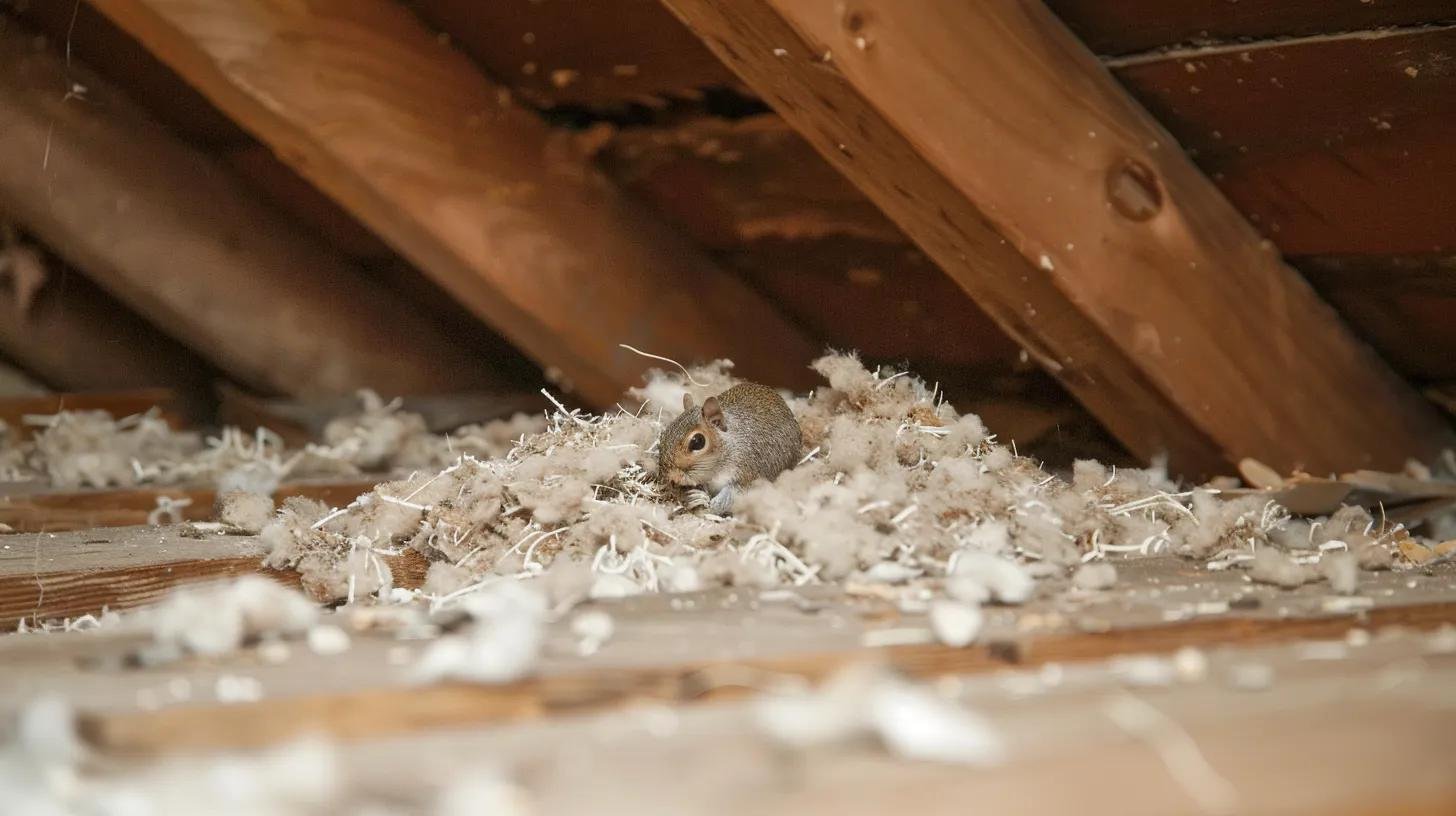
Fall Timing Advantages for Insulation Projects
The timing of insulation removal and replacement projects significantly impacts both project success and cost-effectiveness, with fall offering several distinct advantages over other seasons. Understanding these timing considerations helps homeowners plan comprehensive home improvement projects that address multiple concerns efficiently.
Optimal Working Conditions
Fall’s moderate temperatures create ideal working conditions for attic projects that would be extremely uncomfortable during summer’s peak heat or winter’s occasional cold snaps. Comfortable working conditions allow for more thorough inspection and higher quality installation work while reducing the safety risks associated with extreme temperature exposure.
Lower humidity levels during fall months reduce the risk of moisture problems during insulation projects while providing better conditions for identifying existing moisture issues that need to be addressed before new insulation installation. Dry conditions also facilitate more effective attic sanitation and remediation work when contaminated materials require removal.
Extended daylight hours during fall provide ample natural lighting for detailed inspection work while moderate temperatures allow for longer work periods without fatigue or heat stress. These conditions result in more thorough projects with better attention to detail and quality control.
Pest Activity Patterns
Fall represents an ideal time for pest prevention work because many species are actively seeking overwintering sites but haven’t yet established in preferred locations. Insulation replacement during fall eliminates existing pest harborage while installing fresh materials that provide maximum pest resistance.
The timing also allows for comprehensive pest control treatments in conjunction with insulation work, creating integrated approaches that address current infestations while preventing future establishment. Professional pest control services can coordinate their treatments with insulation contractors to maximize effectiveness while minimizing disruption.
Fall insulation projects can incorporate pest exclusion improvements that wouldn’t be practical during other seasons when pests are already established in protected areas. This proactive approach prevents pest problems rather than addressing them after they develop into more serious situations.
Energy Efficiency Timing
Installing new insulation during fall provides immediate benefits as heating season begins, allowing homeowners to realize energy savings right away rather than waiting months for seasonal transitions. This timing maximizes the return on investment for insulation improvements while providing comfort benefits during the cooler months ahead.
Fall installation also provides several months for new insulation to settle and stabilize before peak cooling season the following summer, ensuring optimal performance when energy demands are highest. This settling period allows for minor adjustments if needed before the most critical performance period.
HVAC system performance improvements from new insulation become apparent immediately during fall weather transitions, providing early feedback about project effectiveness while allowing time for any necessary adjustments before extreme weather conditions arrive.
Professional vs DIY Insulation Removal
The complexity of pest-contaminated insulation removal and the health risks involved make professional services strongly recommended for most situations, though understanding the challenges involved helps homeowners make informed decisions about DIY vs professional pest control approaches for insulation-related pest problems.
Health and Safety Considerations
Professional insulation removal services have specialized equipment and training to handle contaminated materials safely while protecting workers and homeowners from exposure to hazardous substances. Contaminated insulation can harbor dangerous pathogens, while insulation fibers themselves can cause respiratory irritation and other health problems.
Proper personal protective equipment for insulation removal includes respirators, protective clothing, and eye protection that most homeowners don’t possess. Professional services also have the experience necessary to identify and avoid electrical hazards, structural concerns, and other safety risks that DIY efforts might overlook.
Contaminated material disposal requires specialized handling and disposal methods that comply with local regulations while protecting public health and environmental safety. Professional services understand these requirements and handle disposal properly, eliminating legal and environmental risks for homeowners.
Technical Expertise Requirements
Effective insulation removal requires understanding the relationship between different insulation types, building construction methods, and pest biology that allows for comprehensive problem resolution rather than temporary fixes. Professional services can identify underlying problems that contribute to pest infestations while recommending appropriate solutions.
Proper insulation installation involves complex considerations including air sealing, vapor barriers, ventilation requirements, and building code compliance that require specialized knowledge and experience. Amateur installation often fails to address these technical requirements, leading to performance problems and potential code violations.
Integration with pest control measures requires coordination between insulation and pest control services that ensures both aspects of the project work together effectively. Professional services can provide this coordination while ensuring that pest control measures don’t interfere with insulation performance.
Equipment and Access Requirements
Professional insulation removal requires specialized vacuum equipment capable of handling large volumes of loose insulation material while containing dust and contaminants effectively. This equipment typically costs thousands of dollars and requires regular maintenance that makes purchase impractical for single-use applications.
Access to tight attic spaces and awkward areas requires equipment and techniques that professional services have developed through experience while maintaining safety standards. DIY efforts often struggle with access limitations that result in incomplete removal or unsafe working conditions.
Material handling equipment for removing contaminated insulation and installing new materials requires coordination and planning that professional services provide as part of comprehensive project management. DIY projects often underestimate the logistical challenges involved in material handling and disposal.
Choosing the Right Insulation for Pest Prevention
Modern insulation options provide varying levels of pest resistance and performance characteristics that allow homeowners to select materials that optimize both energy efficiency and pest prevention based on their specific needs and circumstances. Understanding these options helps homeowners make informed decisions that provide long-term value and protection.
Pest-Resistant Materials
Spray foam insulation provides excellent pest resistance due to its seamless installation that eliminates gaps and cracks where pests might establish harborage areas. Closed-cell spray foam offers superior pest resistance compared to open-cell varieties while providing enhanced moisture resistance that reduces pest attraction.
The chemical composition of spray foam makes it unappealing to most pest species while its structural properties prevent tunneling and nesting activities that commonly occur in loose-fill insulation materials. However, spray foam installation requires specialized equipment and training that makes professional installation essential for optimal results.
Mineral wool insulation offers natural pest resistance due to its inorganic composition that provides no nutritional value for pest species. The fibrous structure of mineral wool also creates an environment that most pests find uncomfortable while providing excellent thermal and acoustic performance.
Radiant barrier systems can be incorporated with traditional insulation materials to provide additional pest deterrence while improving energy efficiency. These reflective materials are unappealing to most pest species while their smooth surface makes establishment of nesting sites more difficult.
Installation Considerations for Pest Prevention
Proper air sealing during insulation installation eliminates the gaps and cracks that allow pest entry while improving energy efficiency significantly. Professional installation includes comprehensive air sealing that addresses both obvious and subtle air leakage paths that pests exploit for access.
Vapor barrier installation and moisture management prevent the moisture problems that attract many pest species while protecting insulation materials from degradation that reduces their pest resistance over time. Professional installation ensures proper vapor barrier placement and sealing that provides long-term protection.
Ventilation considerations during insulation installation ensure adequate airflow that prevents moisture accumulation while maintaining the temperature conditions that discourage pest establishment. Proper ventilation design requires understanding building science principles that professional contractors provide.
Integration with pest control measures during installation allows for comprehensive approaches that address both current pest problems and future prevention needs. Professional contractors can coordinate with pest control services to ensure compatibility between different aspects of the project.
Maintenance and Long-term Protection
Effective insulation performance for pest prevention requires ongoing maintenance and monitoring that extends beyond initial installation to include regular assessment and proactive management strategies. Understanding these long-term requirements helps homeowners protect their investment while maintaining optimal performance.
Regular Inspection Schedules
Annual attic inspections allow for early detection of pest activity before significant damage occurs while providing opportunities to address minor maintenance issues before they become major problems. These inspections should include assessment of insulation condition, pest signs, moisture problems, and structural concerns.
Professional inspections provide expertise in identifying subtle signs of pest activity and insulation degradation that homeowners might overlook while offering recommendations for preventive maintenance that extends insulation life and effectiveness.
Signs of pest problems can be detected early through regular monitoring that allows for prompt intervention before infestations become established. Early detection and treatment prevent the extensive contamination and damage that require complete insulation replacement.
Seasonal inspection timing allows for detection of pest activity patterns while providing opportunities for preventive treatments during optimal periods. Fall inspections are particularly important because many pest species are actively seeking overwintering sites during this period.
Preventive Maintenance Programs
Integrated maintenance programs combine insulation care with general home maintenance activities that address multiple concerns efficiently while providing comprehensive property protection. These programs can include pest monitoring, moisture management, ventilation maintenance, and structural upkeep that supports long-term insulation performance.
Professional maintenance services provide specialized expertise and equipment for comprehensive attic care while offering the convenience of coordinated service delivery that addresses multiple property maintenance needs. These services often provide cost savings compared to individual service providers while ensuring compatibility between different maintenance activities.
Climate Change Adaptations
Climate change pest control considerations increasingly impact insulation selection and maintenance as changing weather patterns create new pest pressure and moisture management challenges. Modern insulation systems must be designed to accommodate these changing conditions while maintaining long-term effectiveness.
Extended pest activity seasons and changing precipitation patterns require adaptive management approaches that address evolving conditions while maintaining consistent protection levels. Professional services monitor these changes and adapt their recommendations accordingly to ensure continued effectiveness.
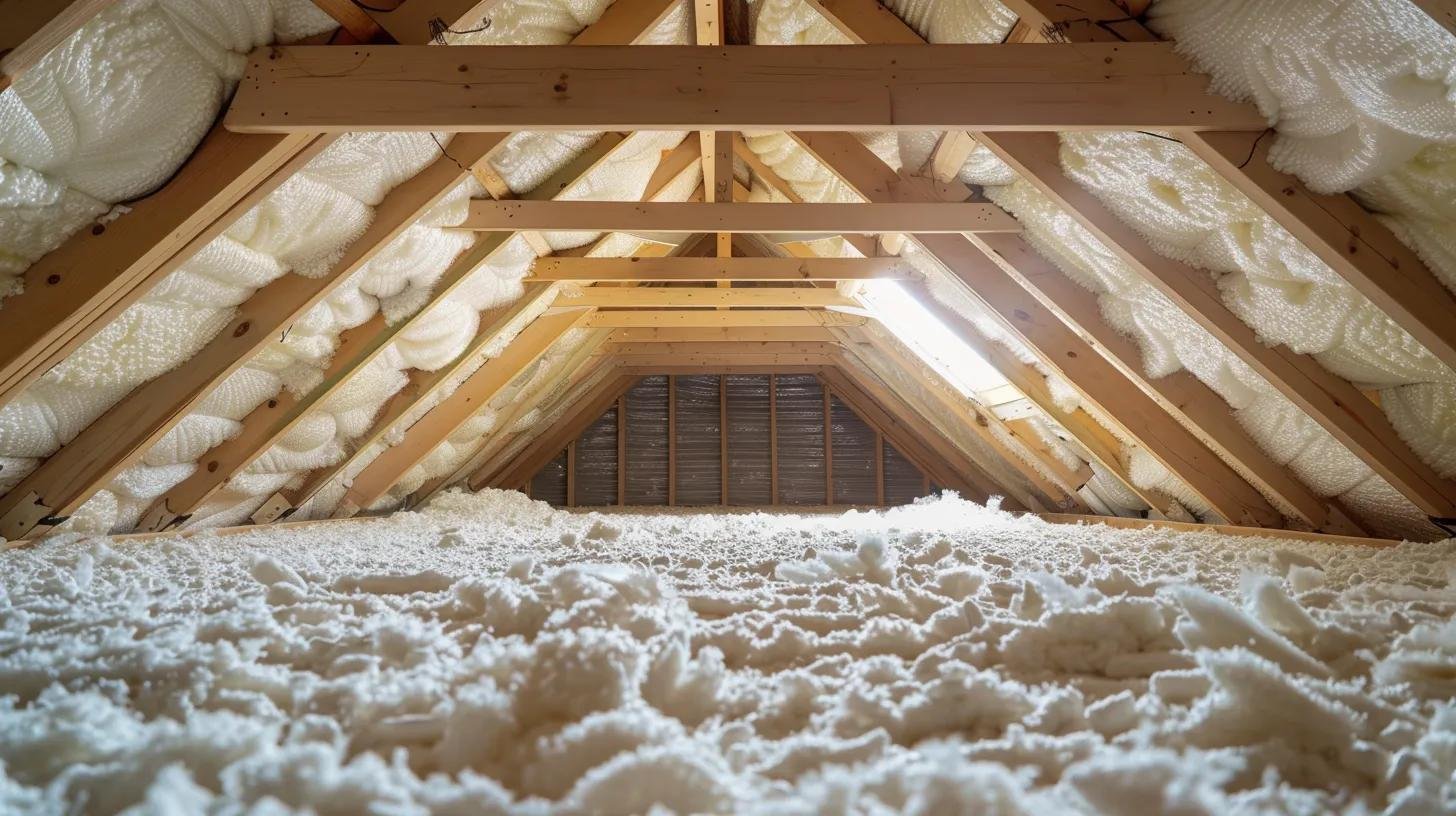
Return on Investment for Insulation Replacement
Understanding the economic benefits of pest-preventive insulation replacement helps homeowners evaluate the investment in terms of both immediate benefits and long-term value creation. The comprehensive advantages of quality insulation extend beyond simple pest prevention to include energy efficiency, comfort, property value, and health benefits that justify the investment through multiple benefit streams.
Energy Savings Calculations
Modern insulation materials can reduce heating and cooling costs by 20-50% compared to old, compromised insulation while providing immediate comfort improvements that enhance daily living experiences. These energy savings typically provide payback periods of 3-7 years depending on local energy costs and the extent of insulation improvements.
Professional energy assessments can quantify expected savings based on specific property conditions and local utility rates while identifying additional efficiency improvements that complement insulation upgrades. These assessments help homeowners understand the total economic impact of comprehensive efficiency improvements.
Utility incentive programs often provide rebates or financing assistance for insulation improvements that reduce the upfront investment while accelerating payback periods. Professional contractors can help homeowners access these programs while ensuring compliance with program requirements for maximum benefits.
Property Value Enhancement
Quality insulation improvements typically add 80-100% of their cost to property values while providing marketing advantages for future sales. Modern buyers increasingly prioritize energy efficiency and home health considerations that quality insulation directly addresses.
Professional installation with proper documentation provides verification of quality improvements that support property value claims while demonstrating commitment to home maintenance that appeals to quality-conscious buyers.
Comprehensive insulation improvements often trigger reassessment of property energy efficiency ratings that can provide marketing advantages and insurance benefits while demonstrating environmental responsibility that appeals to modern buyers.
Conclusion
Fall insulation removal and replacement represents one of the most comprehensive home improvement strategies available for addressing pest problems while providing multiple additional benefits including energy efficiency, comfort, health protection, and property value enhancement. The relationship between insulation condition and pest activity makes this improvement particularly valuable for homeowners experiencing recurring pest problems that seem to resist conventional control efforts.
The timing advantages of fall projects, combined with the immediate benefits of improved pest protection and energy efficiency, make this season ideal for comprehensive insulation improvements that provide both immediate and long-term value. Professional installation ensures optimal performance while providing the technical expertise necessary to address complex pest and building science interactions.
The investment in quality insulation removal and replacement typically provides excellent returns through reduced energy costs, improved comfort, enhanced property values, and eliminated pest control expenses that accumulate over time. When viewed as a comprehensive home improvement strategy rather than simply a pest control measure, insulation replacement becomes one of the most cost-effective improvements available to homeowners.
Don’t let compromised insulation continue to attract pests while wasting energy and creating health risks for your family. Take advantage of fall’s optimal conditions to implement comprehensive insulation improvements that protect your home, reduce your environmental impact, and enhance your quality of life for years to come.



